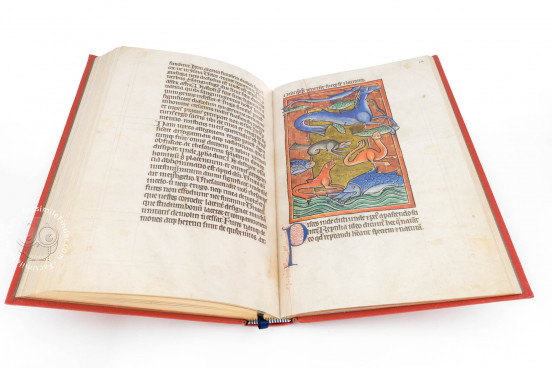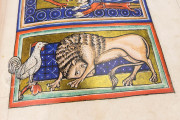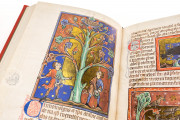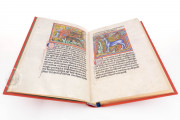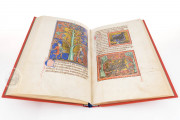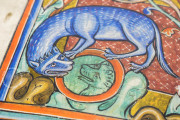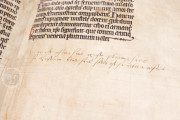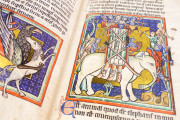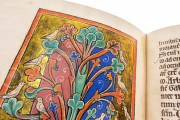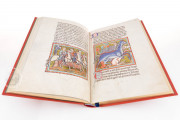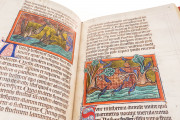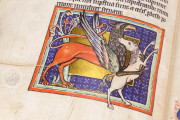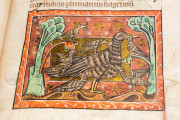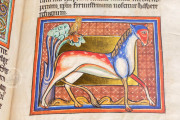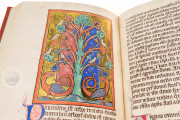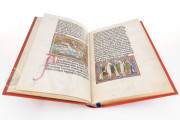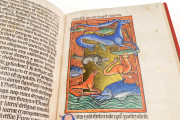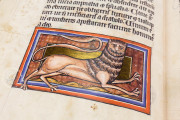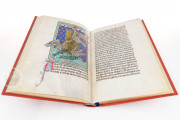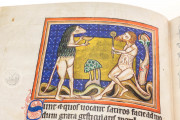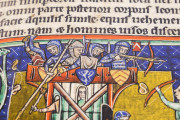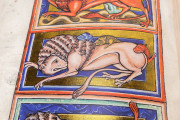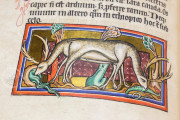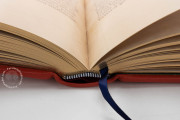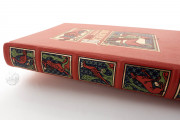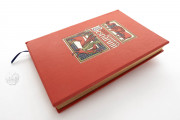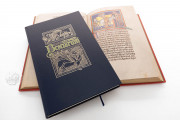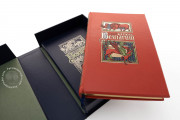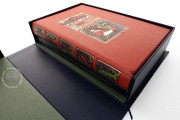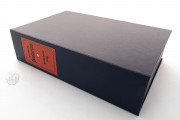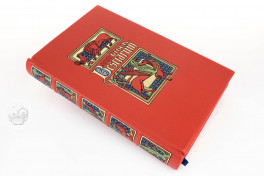The Bodley Bestiary is a delightful example of a rich Gothic manuscript tradition of illuminated bestiaries that flourished in England from the mid-12th to the mid-13th century. The Bodleian manuscript dates to the latter half of this period. Bestiaries compiled the available knowledge about the creatures of the natural works from wild to domestic to fantastic beasts of legend. Through the inclusion of relevant quotes from scripture, the nature of each creature was used as allegory for Christian life. Most descriptions are accompanied by delightful illustrations rendered in bold colors and highly burnished gold, often showcasing how the creature relates to the human world.
Likely created in Salisbury, the book contains Latin descriptions of over 140 animals prefaced by a short overview of the creation and naming of the beasts. The luxury of the volume coupled with a preference for knightly activities suggest patronage by a wealthy noble. A manuscript rich in pictorial charm, MS Bodley 764 is among the finest of the English bestiaries.
Beasts of Land, Air, and Sea
The animals are grouped into three main categories: beasts of the land, beasts of the air, and beasts of the sea. Those of the land are further differentiated as wild or domestic. This indicates a tenuous natural science in its approach to the material, an effort to make better sense of the whole of creation. The first animal is the lion, noble and just. It received the most illustrative attention featuring in two full-page images and a third in-text, in all represented seven times.
The final depiction is that of the biblical leviathan in a full-page image where the creature surfaces beneath a ship, so large that the crew make a cooking fire upon its back. The illuminations are confident and crisp creating an endearing menagerie of enchantingly expressive beasts.
A Luxurious Text for the Study of Nature and the Divine
For all their charm, bestiaries were books for private devotion and are concurrent with and similar to psalters. This manuscript’s text, written in a skillful Gothic Precissa hand, is presented in a single column over twenty-seven lines. Blue and red initials span three lines and are embellished by contrasting pen flourishes. The regular layout and clean design are that of an experienced scriptorium.
An Early Example of Authentic Heraldry
The elephant, pictured on fol.12r, carries on its back a great war tower peopled with numerous warriors. Displayed from the battlements are three shields showing the devices of the Berkeleys and, central, that of Roger de Mohaut (d. 1260), "azure a lion rampant argent". The first animal depicted is also a lion, also white on a blue field and devouring an ape, perhaps a reference to the book’s patronage.
We have 1 facsimile edition of the manuscript "Bodley Bestiary": Liber Bestiarum facsimile edition, published by The Folio Society, 2008
Request Info / Price

